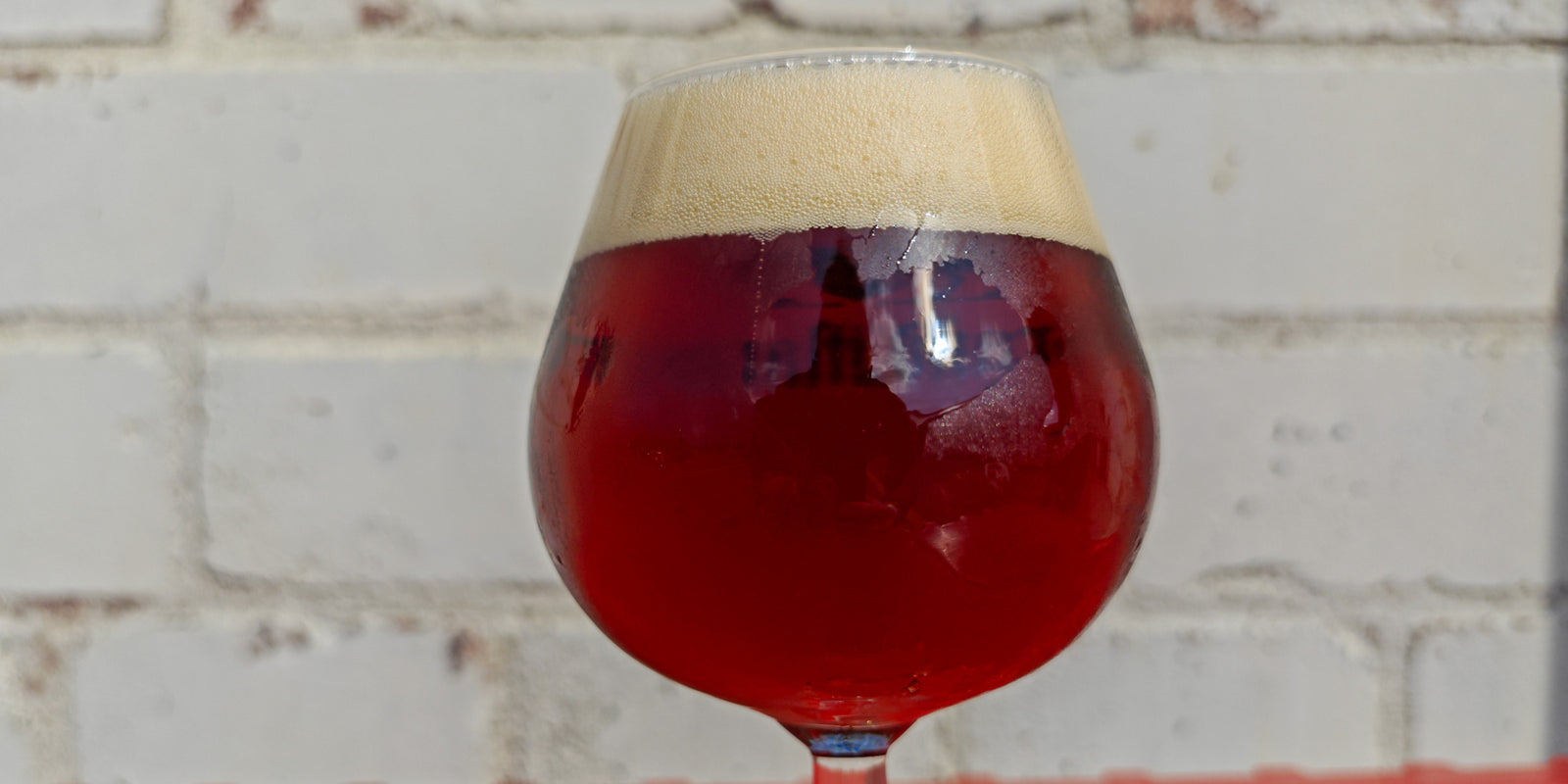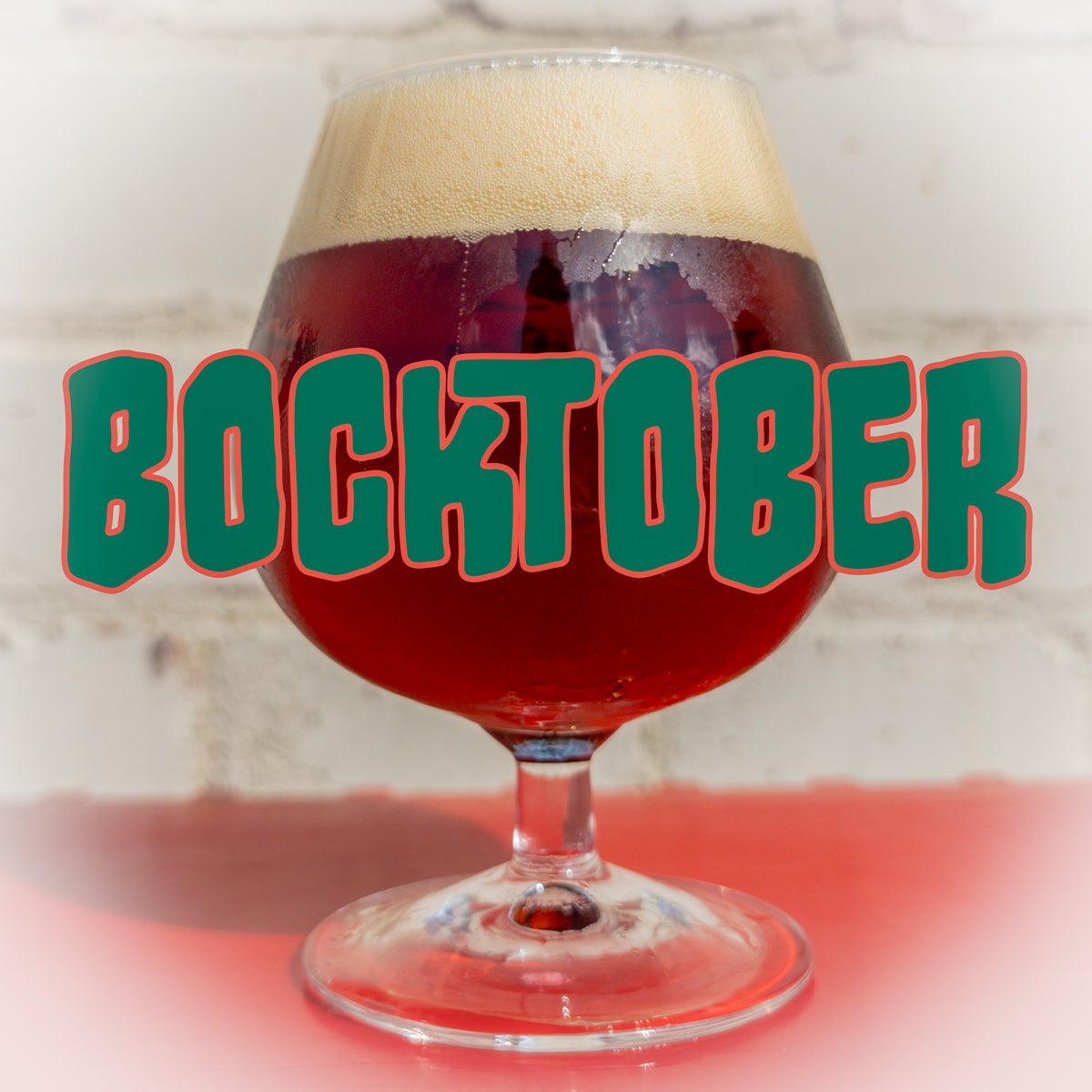Sold out
Bocktober - Doppel Bock Recipe
$46.99
Doppelbock – 5.5 Gal - OG 1.069 – FG 1.003 – ABV 7.8% - IBU 18 – SRM 14
October is here. The leaves are falling, the Jack o’Laterns are lit, Shoppers Drug Mart is inexplicably already playing Christmas music. What better to accompany these increasingly dark nights than a rich Doppelbock. It is a rich dark lager ideal for this time of year. Its crisp smoothness obscures 7.8% ABV. The flavour is rich and malty and the colour is a brilliant dark red colour. Made with a bunch of Weyermann Munich II malt. It has notes of caramel, raison, biscuit with just the right amount of hop character to keep it balanced. So this October send the kids out trick or treating and sit back and enjoy a nice glass of Bocktober.
Ingredients and Instructions are listed below
Ingredients
Grains
- Munich Type 2 Dark x 8.3lbs
- Rahr Pilsner x 4lbs
- Caramunich III x 1lb
- Victory Malt x 0.5lbs
Hops
Boil Schedule (minutes)
- Northern Brewer 1/3oz @ 60 minutes
- Northern Brewer 2/3oz @ 15 minutes
Yeast
- Novalager Yeast
Extras (Must be purchased separately)
- Amylo 300 - 1/10th ounce at fermentation
- Biofine - 1 teaspoon 48 hours prior to kegging
- Irish Moss - 1 tsp for last 15 minutes of boil
- DME/Dextrose - 150g at bottling for priming

Instructions
(please note, most of these pictures are from other beers - but the beauty of brewing is that the majority of steps for brewing beers are very similar, and these photos are equally instructive for any style of beer.)
Printable Instructions
Important Tips on Brewing
- Be extra cautious when it comes to cleaning! Once you have stopped boiling your wort everything that gets in contact with the beer MUST be sanitary.
- The temperature of your mash is ABSOLUTELY CRITICAL. Not being in the 150-155f range can drastically affect your beer. Make sure you correct the temperature ASAP once all the grain has been added to the mash.
- Always let your beer ferment for 10 days! Do not disturb it, do not open the lid. It is absolutely natural for the airlock to stop bubbling after a few days, it is still fermenting though.
- Oxidization: Airspace is always something to consider. When undergoing primary fermentation airspace is needed so that the beer can bubble up and ferment vigoursley without leaking out of the container. The fermentation creates a layer of CO2 that remains in the pail due to the airlock. Once primary fermentation is over, and the lid has been opened, the layer of CO2 dissipates, and oxygen replaces it. At this point airspace can ruin your beer. When racking into carboys make sure they are filled to the top, or you blast CO2 inside to prevent oxidization. Ask us for details on this!
- Before bottling, make sure you use a priming calculator (many can be found online) to verify the amount of sugar that needs to be added.
Mashing -> Converting the Grain into a Fermentable Liquid
- Bring 6 gallons of water in your brew pot to 155°F. This is our strike temperature. Turn off the heat to the pot.
- Wrap the muslin/nylon bag around the brew pot and slowly pour all the milled grains into the bag. Stir them in while adding to prevent clumps. The addition of grain should drop the temperature down to 150-155°F.
- We want to mash the grain at 150°F for 60 minutes. It is very important to hold the temperature at 150°F. If the temperature rises above 155°F it hurts the fermentation, or if it dips below 149°F it can lead to a thinner tasting beer.
- After 60 minutes, bring the temperature of the mashing grain up to 170°F and hold for 10 minutes. This is our mash out.
- Time to remove the grain. Lift the bag full of grain out of the brew pot. Let the liquid in the bag dribble into your wort. Once that is done, put the bag inside of a brewing pail, or another empty pot. There will be about 4 gallons of wort in the brew pot, we need to get it to 6 gallons before we can begin the next stage.
- Run warm water through the grains in the bag, aim for 170°f – let it run through the grains and add to the brew pot. Add until you reach 6 gallons.
Boiling -> Sterilizing the Wort Time
- Bring 6 gallons of your wort to a rolling boil, and let it boil for 5 minutes, this is called the hot break.
- Set a timer for 90 minutes, keep the wort boiling (212°f) and uncovered.
- With 60 minutes left in the timer add 1/3 ounce of Northern Brewer to the boil and continue to boil.
- With 15 minutes left add 1tsp of Irish Moss and 2/3 ounce of Northern Brewer hops to the boil.
- When your timer goes off, turn off the heat, and then proceed to the cooling stage.
- Now it’s time to cool the beer down to 75°f (20-25°c) as quickly as possible.
Fermentation -> Turning the Wort into Beer
- After the boil is done it is time to be extra careful regarding sanitation. We recommend using a no-rinse sanitizer called Starsan. Mix ¼ tsp of it with water in a 500ml spray bottle. Before we touch any part of the beer, we spray it with Starsan.
- Transfer the cooled wort into your fermenting pail or carboy. Run it though a strainer to catch any hop or grain residue.
- *OPTIONAL* If the beer is way off the target of 1.069 we strongly recommend adding more sugar to the wort to bring the gravity back up. If your gravity is at 1.059 or lower, we recommend bumping it with more sugar.
- Your choice of fermentation vessel is important. During primary fermentation, it will bubble up quite a bit, you want to be sure there is airspace for it to work away. Otherwise, the pressure of it will push out the airlock.
- Make sure the wort has been cooled to at least 23c!!! Adding yeast at a higher temperature will likely kill it.
- Once the beer is in the fermenter, pour in the entire package of NovaLager yeast, and then add 1/10th of an ounce of Amylo 300 to the fermenter. (we like to fill a shot glass 10% full and pour it in)
- Put the bung and airlock in the hole (make sure there is water filled up to the line in the airlock). If using a pail, make sure the lid is sealed tight. Put the pail in a room that is in the range of 12-20°C. We fermented this beer at an ambient temperature of 18°C. Unlike most lager recipes, this one does not need a diacetyl rest.
- Let the beer ferment for 10 -14 days, It will do the majority of the fermentation in the first few days, but letting it sit will help with clarity and settling flavours.
- After 10-14 days proceed to the bottling stage. Take a hydrometer reading. It should be somewhere between 1.000 – 1.004
- Lately, we have been of the opinion that secondary is an unnecessary step. Unless you are kegging, we recommend skipping secondary and going straight to the bottling process. Clarification can occur in the bottle rather than in a carboy, and the risk of oxidization is greatly reduced.
Bottling -> We’re getting close to Beer Time now
- Rack the now fermented beer into a bucket.
- At the same time, mix the priming sugar with 300ml of boiling water and add to the beer. Stir it in VERY gently.
- Rack the beer into your bottles or growlers. Then, let them sit for 2-3 weeks at room temperature. Chill and enjoy!
- If you are kegging, rack the beer into the keg and put CO2 on it right away. 2 days at 30 PSI, followed by a 10 PSI taste test. If it is not carbonated enough yet, another day at 20 PSI before returning to 10. There are faster methods of carbonating a keg including using a Quick Carb, or by shaking the keg while attached to CO2 (ask us for details on that method)





